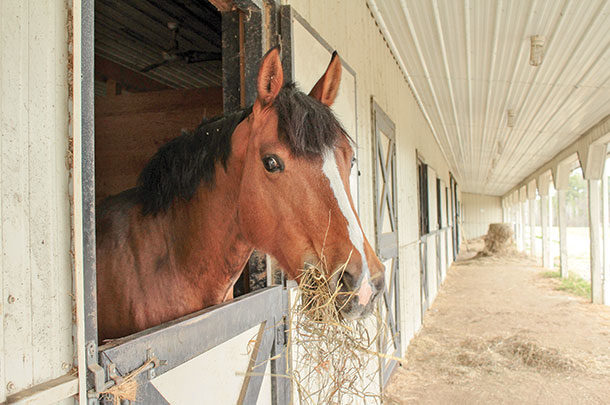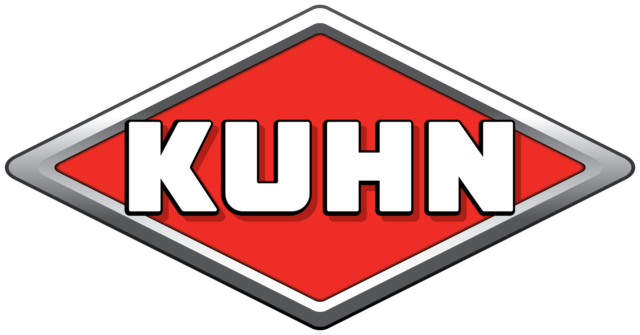Meanwhile, some horse owners rely heavily upon traditional standards for horse hay selection. For instance, a few focus narrowly on hay color, which can hamper a supplier’s efforts to convey the true value of a bale.
Nonetheless, hay producers can capture a new corner in the horse hay market by accommodating the industry’s unique demands.
Hay quality and type matter
If horse managers are among your hay-buying clientele, consider the requirements of the animals they are managing. Nonstructural carbohydrates from hay – including sugars and starches – are digested primarily in the equine small intestine.

Structural carbohydrates from the cell walls in hay plants pass to the hindgut where microbes ferment them, resulting in the formation of volatile fatty acids which the horse can use for energy production.
Nonetheless, even with the aid of microbes, horses do not digest high-lignin, stem-filled hays efficiently. Horse owners who feed over-mature hay may notice considerable waste when horses pick through a bale to avoid unpalatable stems.
Hay type preferences for horses are often tied to perceived palatability and digestibility. Alfalfa, timothy, orchardgrass and bermuda are popular selections, but many other forages can meet a horse’s needs.
Knowledgeable buyers are good customers
A forage analysis can go a long way towards showing, not just telling, the ways in which species, maturity, harvest conditions, purity and post-harvest storage can interplay to affect the quality of each load you offer your customers. A number of laboratories throughout the country offer hay analysis for a relatively low cost.
If your buyers are unfamiliar with hay production, take a few minutes to explain the harvest process, what a “cutting” is and why hay quality or maturity could vary between loads. Bear in mind that some people have questions about hay but are afraid to ask unless encouraged to do so.

When you take extra time to educate your buyers about hay production, quality and value, you may see a qualitative return on your investment.
Remember, your costs could vary from one load to the next and may differ from the seller next door, so a well-informed customer is more likely to accept differences in price if they understand the value of what they are purchasing. Without this information, an inexperienced customer may simply seek out the cheapest option.
Accommodating horse managers’ unique needs
Horse owners generally seek hay with a pleasant color and odor, soft and leafy texture and minimal dust and mold. To these buyers, the absence of toxic weeds is critical.
Some horses have special needs warranting additional criteria for hay selection. Horses with respiratory problems can be particularly sensitive to dusty hay, and horses with certain metabolic disorders may require hay which tests low in non-structural carbohydrates.
Lactating mares, performance horses and young stock may need the highest-quality hay available to satisfy their unique protein and energy demands.
Square bales tend to be more popular than round bales at many barns. They are easier to split into portions for stalled animals, they are light enough for one person to handle alone and they can be stored in small areas. Furthermore, individuals who do not have wagons or trailers for round bales can still haul a few squares in a personal vehicle.
Many horse owners also offer free-choice round bales to their horses in the field, but they still prefer a high-quality, palatable bale. Round bales stored indoors tend to be easier to market to horse managers than bales stored outdoors.
Time and time again, horse owners emphasize the importance of consistency in a hay supplier. Of course, quality can vary from the first cutting to the last, but most buyers are willing to accommodate minor differences.
Major downswings in quality from one load to the next, however, are likely to turn off buyers. If your buyer pulls out a bale that their horses refuse to eat or a bale that does not match the quality of the rest of the load, offer a refund to maintain the buyer’s loyalty.
Marketing is no longer just a “word of mouth” game
Look to the Internet, where many horse owners are engaged in personal research, networking and discussion. At a recent equine forage school in Blackstone, Virginia, extension agent and experienced horse manager Ashley Nauta joined a panel of hay buyers and sellers to offer her perspective.
“Have an online presence so that people can find you with Google,” she said. Some state agricultural agencies host hay clearinghouses where your “for sale” listing may be found through online searches.
You may become highly visible to buyers if you maintain – and regularly update – your own farm website or social media profile. Place your contact information in a prominent location on these pages.
Clinton Carty, a Virginia hay producer who supplies both large Thoroughbred racing barns and small operations, has witnessed the surprising power of social media for farm sales. “Horse people love Facebook,” he says. “Show a stack in the barn, nice and green, and post a picture – ‘First cut looks good,’ and they’ll message you.”
You can share hay updates and specials on your farm’s own profile page, but be sure to tap the eager audiences on equine “for sale” groups. Nearly every region of the country has a populated set of Facebook pages where members can share listings and peruse posts for advice and supplies.
To locate these audiences on Facebook, search keywords like “(your state),” “horse,” “farm,” “sale,” and “network” and ask to join the groups so that you can share your prices and delivery information. Whenever possible, include photos – they capture attention far more quickly than text entries alone.
For face-to-face networking, think outside of the farm gate. “Come to horse events and festivals – they usually take vendors. Open some bales to show people and collect an email list,” Nauta said. Carty offers an alternate idea. “Donate 20 or 30 bales to a 4-H or youth horse show,” he said. You may pick up some buyers who like what they see.
Many small and backyard horse managers can only store a limited number of bales at once and thus must restock frequently. You can broaden your pool of buyers if you are willing to make small, frequent deliveries. However, this can be more costly. If none of your buyers can handle an entire load, consider arranging a split delivery to a central location.
Focus on the long view
A happy business relationship is a two-way street. Most horse owners are pleased to work with the same grower year after year if their needs are met. “Consistency, reliability and relationship are key,” said Nauta.
She appreciates suppliers who honor long-term connections, adding, “You can call the producer and they’ll set aside what you need because you’re a regular buyer.”
When it comes to quality, your ultimate customers – the horses – have a great say in the matter. “If you produce good-quality hay and you can get horses to eat it, your hay will sell,” Carty said. ![]()
Laura Siegle is an agricultural and natural resources agent with Virginia Cooperative Extension – Amelia County. Email Laura Siegle.
PHOTOS: Horses eating hay. Photos by Laura Siegle.













